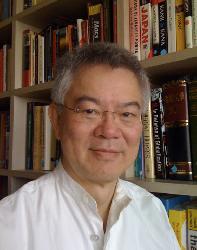
Mao, the False God
Project Syndicate | Jun 1, 2005
By Sin-ming Shaw
Should Chairman Mao’s huge portrait still hang above the front gate of Tiananmen Square? Should China’s ruling party still call itself Communist?
These are not idle questions. Unless and until China’s leaders answer both questions with a simple “No” they will continue to have blood on their hands and a tainted legitimacy. Many Chinese do not accept communist rule precisely because the Communist Party denies its past, (and remains) unapologetic about its cruelty.
This is one reason why China has a Taiwan “problem.” The Chinese Communists insist that being Chinese means accepting the political reality of a sole Communist sovereign. Indeed, many Taiwanese think that, if being Chinese means accepting all that goes under the name of Mao Zedong and the Chinese Communist Party, they will gladly deny their “Chineseness” than assume some of that shame.
Similarly, while a recent poll found that 70% of Hong Kong’s people are proud of being ethnic Chinese, a similar percentage are ashamed of the conduct of the mainland government. Their message to the government in Beijing is this: you cannot take away our ethnicity but you have soiled our dignity through your barbarism. For Hong Kong, the defining symbol of the Communist government is the killing of students with abandon on June 4, 1989.
Enshrined in the Chinese Communist Party’s constitution are the following words: “Mao Zedong, the Party’s chief representative, created Mao Zedong Thought, which has been proved correct by practice and based on which the Communist Party developed the basic system of socialism economically, politically, and culturally after the founding of the People’s Republic.”
But how “correct” was Mao?
In her devastating new book Mao: The Unknown Story , Jung Chang (author of the international bestseller Wild Swans ) exposes startling new details that prove beyond doubt that Mao was a tyrannical, cruel hypocrite whose disregard for human lives and suffering surpassed that of even Stalin and Hitler. Her catalogue of Mao’s “correct practice” is numbing in its immorality and bloodthirstiness.
To help finance his communist movement in the 1930’s, Mao squeezed poor peasant families with any assets in the “Red” zone he controlled. Many “counter-revolutionary” families were forced out of their homes to live in buffalo sheds so that their meager assets could be requisitioned.
While hiding out in the caves of Yenan, Mao became a distributor of opium. Contrary to myths that he and his insurgents lived frugally during the Yenan days, they lived well on trading profits.
After the Nationalist government collapsed in 1949, Mao’s “New China” emerged. Almost immediately, he launched another campaign to suppress “counter-revolutionaries,” berating one province for “being too lenient, not killing enough.”
Killing “enemies” was not the sole purpose. Mao wanted to instill obedience by having as many people as possible witness the terror. As he put it in 1951, “Many places don’t dare to kill counter-revolutionaries on a grand scale with big publicity. This situation must be changed.”
In Beijing millions of inhabitants were ordered to witness some 30,000 sentencing and execution rallies during the early 1950’s. Indeed, in 1950 and 1951 an estimated three million people perished by execution, torture, or suicide.
Masses of Chinese were sent to work camps, where prisoners endured harsh physical labor to “reform” their “bourgeois” habits and thoughts. In any given year, roughly 10 million such “laborers” existed. During Mao’s rule, an estimated 27 million died in the camps.
Close to 38 million people died of starvation and overwork during the infamous Great Leap Forward (1958-61) to catch up with the West. Mao’s reaction? “With all these projects, half of China may well have to die. If not half, one-third, or one-tenth – 50 million – die….but you can’t blame me when people die.”
Mao launched the Cultural Revolution (1965-76) to take revenge against those who opposed his mad programs. Millions more died.
Mao also ordered the country to destroy the “Four Olds”: old ideas, old culture, old customs, and old habits. As a result, his Red Guards destroyed ancient books, priceless antiques, monuments across the land, and nearly all Buddhist monasteries in Tibet.
In all, it is estimated that more than 70 million people died in the “New China” Mao and the present Communist Party leaders so proudly proclaim as their accomplishment.
When Japanese Prime Minister Kakuei Tanaka went to China in 1974, he bowed deeply to the Chairman, apologizing for the suffering that invading Japanese had caused. Mao famously said: “No need to apologize. We should thank you instead. Without your invasion, we Communists would not have won.”
What about today’s “New New China,” with its skyscrapers, modern highways, and unbridled capitalism? The reality is not as gleaming as it first looks. Annual per capita GDP in Shanghai, China’s showcase city, remains, at $3,000, a small fraction of the levels in Taiwan and Hong Kong. Fifty years of communist misrule have left what was once the most advanced city in Asia a distant also-ran.
China’s communist rulers must own up to their history and drop Mao and the communist legacy. The country needs a new constitution – one that enshrines genuine democracy.
China’s people have long been ready for this. Maintaining the false label of communism while reviving capitalism and insisting that Mao, for all his mistakes and crimes, was 70% “correct” is the bedrock of the moral corruption that afflicts China today. It is as if the Nazis were still in power, with the current leaders claiming that Hitler was only 30% wrong. China deserves better; it requires better in order to reclaim the glory that was China.
Sin-ming Shaw is a Visiting Scholar at Columbia University in New York.
Copyright: Project Syndicate, 2005.
Back to home page
